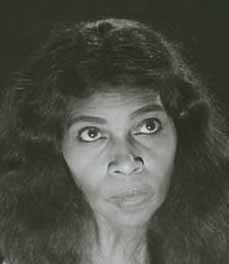Key Word Search
Multi-Field Search
Browse
Repertory Report
Performers Report
Contacts
Met Opera Website
Un Ballo in Maschera
Metropolitan Opera House, Fri, January 7, 1955
Debut : Marian Anderson
Un Ballo in Maschera (54)
Giuseppe Verdi | Antonio Somma
- Amelia
- Zinka Milanov
- Riccardo
- Richard Tucker
- Renato
- Leonard Warren
- Ulrica
- Marian Anderson [Debut]
- Oscar
- Roberta Peters
- Samuel
- Nicola Moscona
- Tom
- Norman Scott
- Silvano
- Calvin Marsh
- Judge
- James McCracken
- Servant
- Charles Anthony
- Conductor
- Dimitri Mitropoulos
- Director
- Herbert Graf
- Set Designer
- Mstislav Dobujinsky
- Costume Designer
- Ladislas Czettel
- Choreographer
- Zachary Solov
Un Ballo in Maschera received six performances this season.
With this performance, Marian Anderson became the first African-American
artist to sing a role with the company.
Review 1:
Review of Miles Kastendieck in the N. Y. Journal American
Marion Anderson's debut on January 7 became one of the historic moments in the Metropolitan Opera's 71-year-old story. For her it marked the realization of a childhood dream. For the Metropolitan it not only broke tradition but also set a precedent for including Negroes in future casts. For all it created an emotional occasion out of tribute to her as a singer and out of recognition that to her should fall this signal honor of opening the door for singers of her race.
Though she made a relatively brief appearance as Ulrica in the second scene of Verdi's "The Masked Ball," Miss Anderson graced the stage through force of personality, dignity of stage presence, and vocal artistry. At the start her voice wavered tremulously quite understandably. An ovation had greeted her on the rise of the curtain and it was some time before she brought her singing under control.
The dark quality of her voice fitted the opening aria; so did its brilliance as it warmed into the rest of the scene. She achieved effectiveness at the climax of the scene, though in general her performance needed more dramatic emphasis. She was thoroughly dedicated to giving as forceful a portrayal as possible, but later appearances will undoubtedly bring the characterization more into line.
Though not allowed a solo bow according to a new Metropolitan ruling, she appeared repeatedly with other leading members of the cast in response to prolonged applause at the close of the act.
If she was the heroine of the occasion, Dimitri Mitropoulos was the hero. Under his direction the opera, at its first hearing in six years, gained fresh dramatic impact. He inspired the intensity of the performance not only in his realization of the score but also in his fashioning of the ensemble. He inspired a fine cast to sing its best. His conducting was authoritative and his sense of theater true. He not only rekindled interest n the opera but endowed it with a dynamic strength which minimized whatever thinness the score reveals.
The heroine of the opera was Zinka Milanov, a familiar choice for the role of Amelia. She gave a fervent performance, vocally uneven but emotionally convincing. Rounding out the eternal triangle were Richard Tucker as Riccardo, and Leonard Warren as Renato. Both excelled vocally but acted stiffly. Mr. Warren's "Eri tu" ranked as one of the finest moments in his career. Nicola Moscona and Norman Scott conspired well as Samuel and Tom. Roberta Peters distinguished herself singing Oscar, the page, and supplying the necessary vocal brilliance in the ensembles.
The production with décor by Mistislav Dobujinsky, costumes by Ladislas Czettel, and staging by Herbert Graf caught attention for pictorial effectiveness, especially in the brilliance of the ballroom scene, which drew spontaneous exclamations from the audience.
Photograph of Marian Anderson with her mother.
Photograph of Marian Anderson as Ulrica by Sedge LeBlang.
Search by season: 1954-55
Search by title: Un Ballo in Maschera,
Met careers
- Dimitri Mitropoulos [Conductor]
- Zinka Milanov [Amelia]
- Richard Tucker [Riccardo]
- Leonard Warren [Renato]
- Marian Anderson [Ulrica]
- Roberta Peters [Oscar]
- Nicola Moscona [Samuel]
- Norman Scott [Tom]
- Calvin Marsh [Silvano]
- James McCracken [Judge]
- Charles Anthony [Servant]
- Herbert Graf [Director]
- Zachary Solov [Choreographer]
- Mstislav Dobujinsky [Set Designer]
- Ladislas Czettel [Costume Designer]

